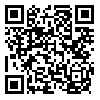BibTeX | RIS | EndNote | Medlars | ProCite | Reference Manager | RefWorks
Send citation to:
URL: http://tumj.tums.ac.ir/article-1-1219-en.html
Introduction: Necrotizing soft tissue infections are one of the most dreaded infections in human and result in a very high rate of mortality. The treatment of these infections must be very aggressive and consists of radical debridement of all necrotic tissue accompanied by appropriate antibiotics.
Materials and methods: This study was undertaken to assess the mortality rate, the time from diagnosis to cure, and some of the parameters which may affect mortality in our patients. In this descriptive, retrospective study first files from patients attended by necrotizing soft tissue infections including Fournier's gangrene or disease, gas gangrene, hemolytic streptococcal infections, myonecrosis, necrotizing fascitis and related subjects in Sina and Amir-Alam hospitals from 1989 to 1999 were studied. Data were extracted and analyzed by SPSS.
Results: The total number of cases was 36. The median age was 47.69 years. Seven of the patients were female. The median time from onset to cure was 10 days. The most common site affected was the perineum and the most common etiology was perianal abscess. Diabetes mellitus was the underlying disease mostly observed. Half of the patients had received inappropriate treatments. In this group mortality was higher.
Conclusion: It is crucial that general practitioners be acquainted with the diagnosis of necrotizing soft tissue infections so that patients are referred immediately to surgical centers. In our referral center the mortality was acceptable but it can be lowered further. The sex, sites of infection, underlying disease and etiologies in our patients were similar to patient in other countries except for alcoholism. It appears that data in foreign texts can be attributed to Iranian patients.
| Rights and permissions | |
 |
This work is licensed under a Creative Commons Attribution-NonCommercial 4.0 International License. |





